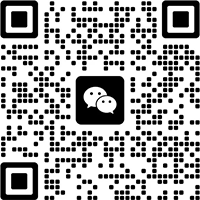In fields like industrial manufacturing, electronics, medical care, and packaging, laser marking machines have become indispensable precision processing tools. Faced with a wide variety of laser marking equipment on the market, how to choose the right model based on material characteristics, processing requirements, and budget? This article will deeply analyze the working principles, core advantages, and application scenarios of CO₂ laser marking machines, fiber laser marking machines, and UV laser marking machines to help you quickly master the selection method.
Working Principles
1. CO₂ Laser Marking Machine
- Applicable Materials: Wood, paper, leather, fabric, acrylic, plastics (ABS, PP, PE, etc.), rubber, ceramics, glass (surface engraving or coating marking), stone, etc.
- Advantages: Excellent processing effect on non-metallic materials, fast speed, and relatively low equipment cost.
- Disadvantages: Poor marking effect on pure metals and some hard plastics (such as untreated PC), with a relatively large heat-affected zone.
- Typical Applications: Date and batch number marking on food packaging, wood carving, acrylic nameplates, leather product marking, glass cup engraving
2. Fiber Laser Marking Machine
- Applicable Materials: Metal materials such as stainless steel, aluminum, copper, iron, titanium alloy, and plated metals; some non-metallic materials such as epoxy resin, ABS plastic, and ink coatings.
- Advantages: Excellent beam quality, small focused spot, high precision, fast marking speed, outstanding metal marking effect, high electro-optical conversion efficiency, maintenance-free (no consumables), and long service life.
- Disadvantages: Poor or no marking effect on most pure non-metallic materials (such as wood, uncoated glass, and ordinary plastics).
- Typical Applications: Nameplates for hardware tools, metal casings of electronic products, traceability codes for auto parts, medical device marking, tool marking.
3. UV Laser Marking Machine
- Applicable Materials: High-precision demand scenarios such as PCB circuit boards, silicon wafers, glass, sapphire, ceramics, electronic components (IC chips, sensors), and medical devices (scalpels, catheters).
- Advantages: “Cold processing” characteristic, extremely small heat-affected zone, capable of ultra-fine marking (micron level), little damage to the material surface, and high-contrast marks on most materials.
- Disadvantages: Relatively high equipment and maintenance costs, and processing speed is usually slower than that of fiber lasers.
- Typical Applications: Micro QR codes on electronic components, mobile phone buttons/casings, medical packaging, plastic films for food packaging, glass artworks, FPC/PCB board marking.
Post time: Nov-19-2025
















